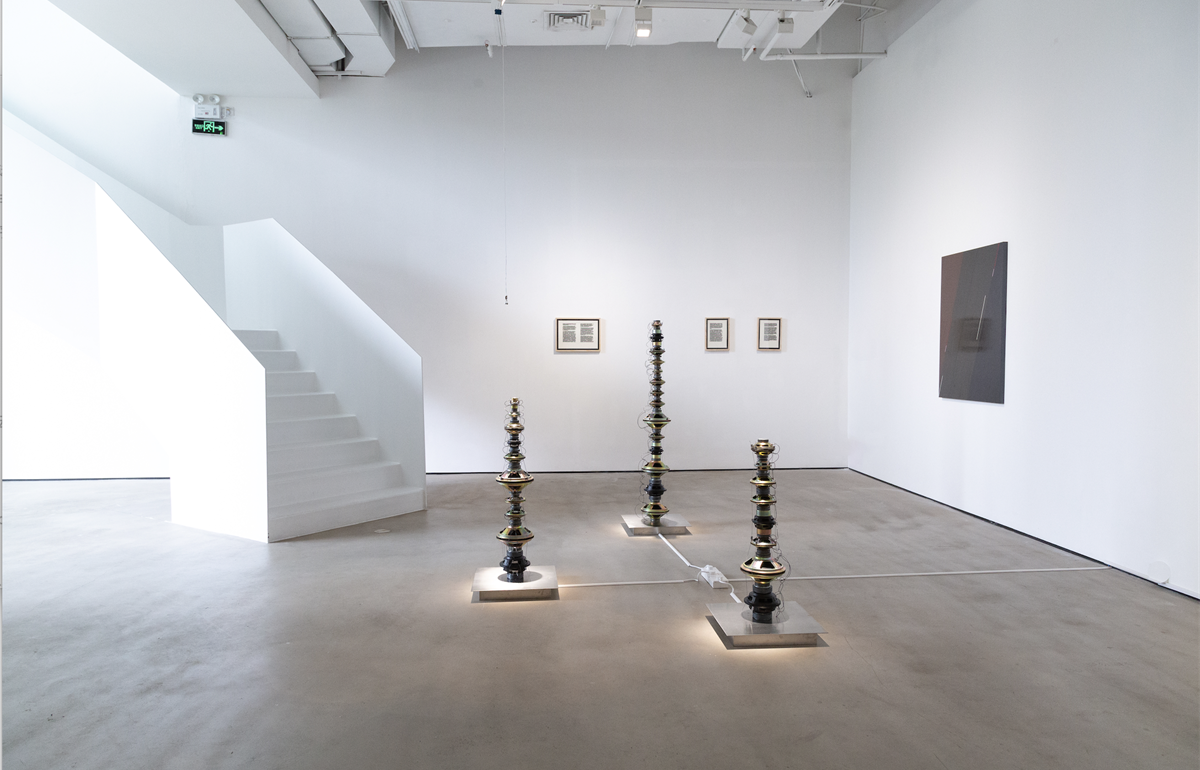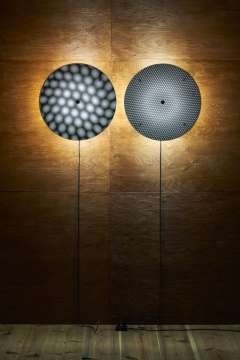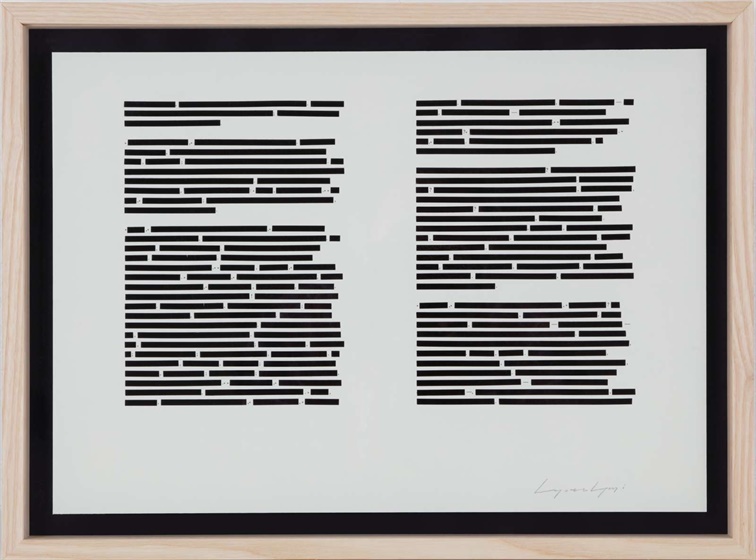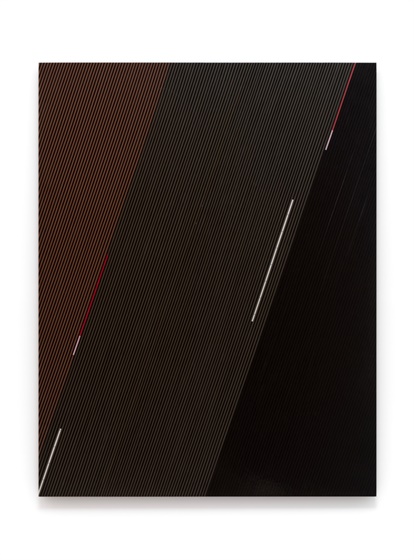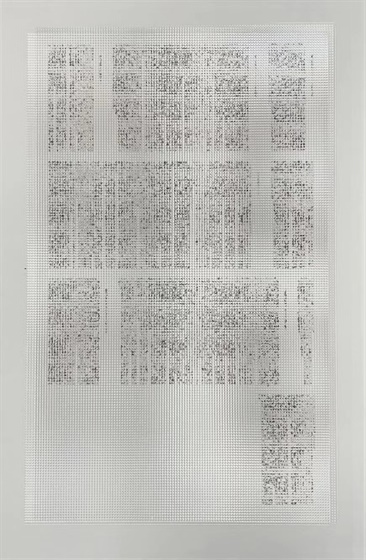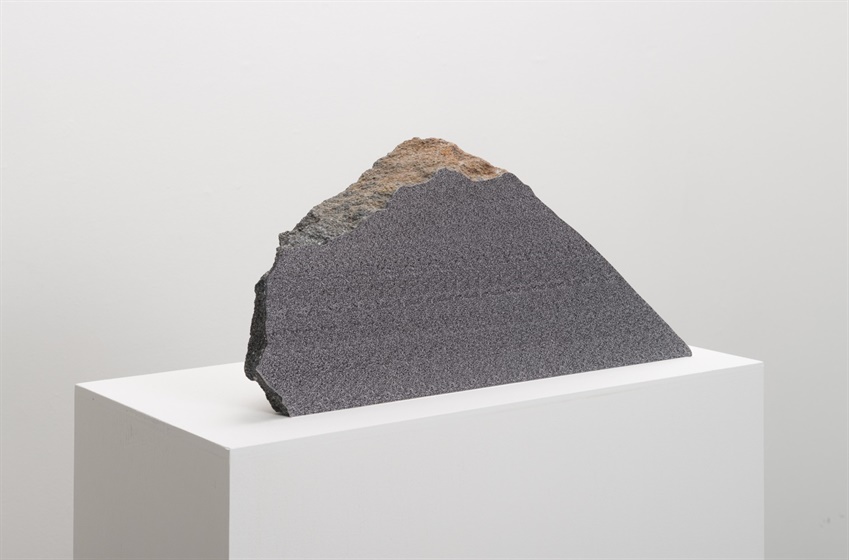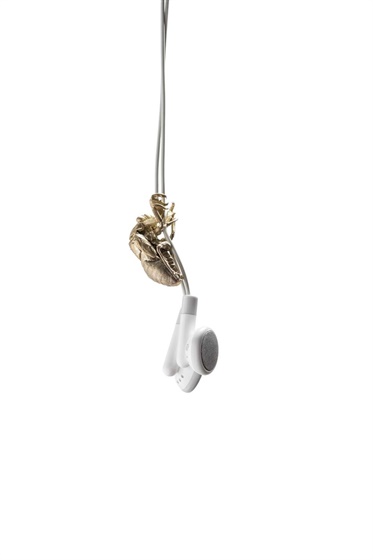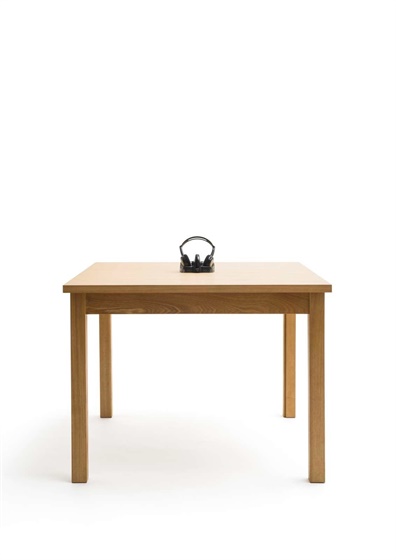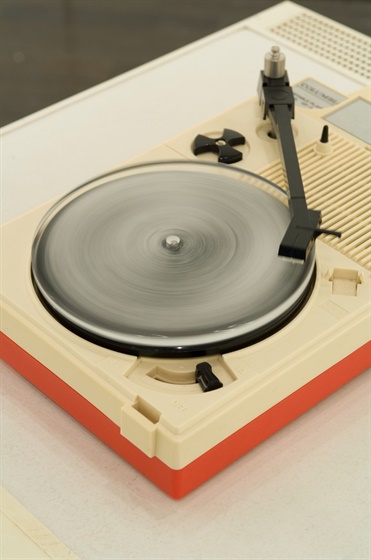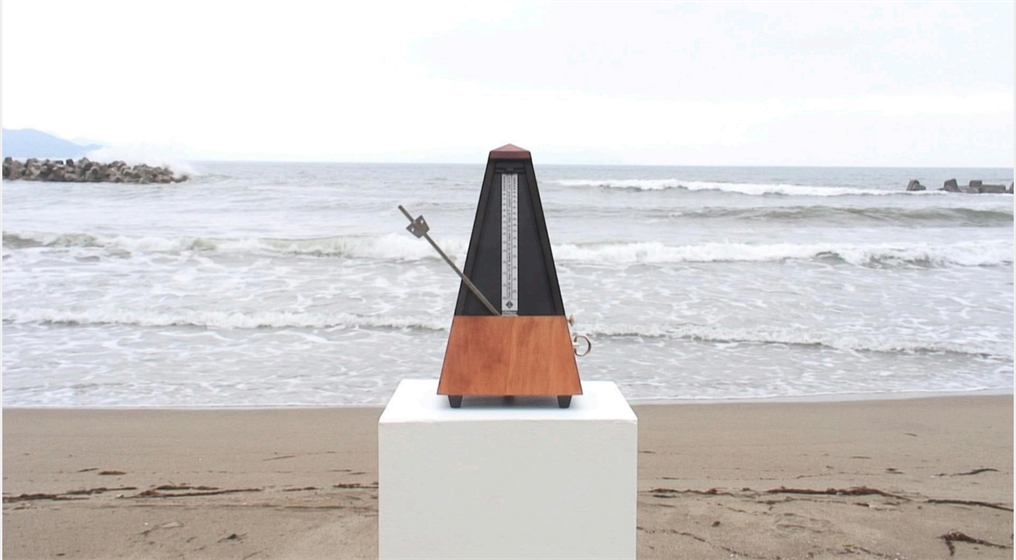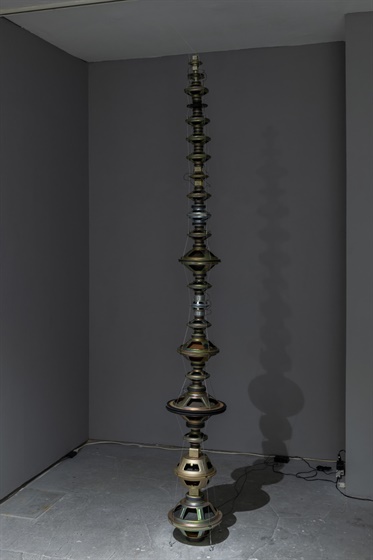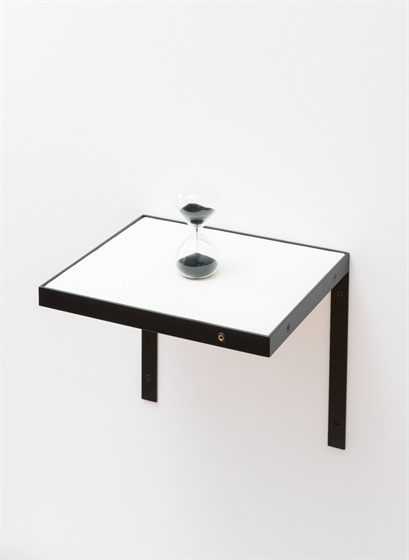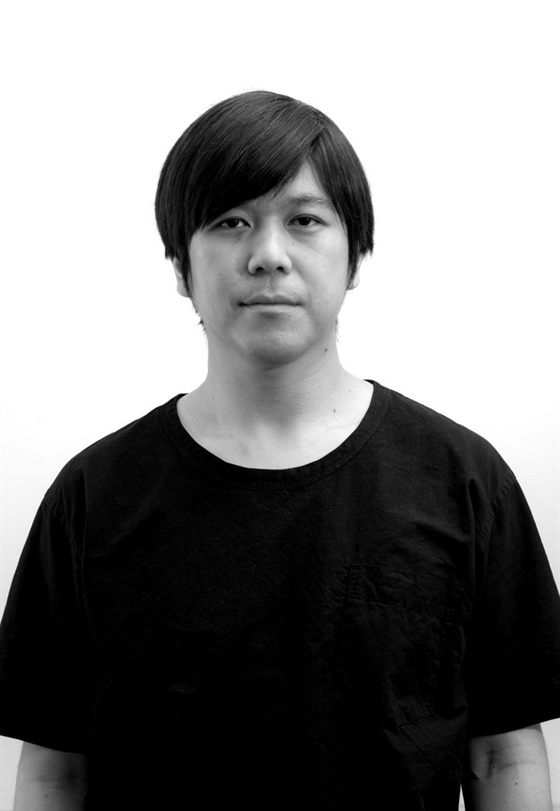Video Link of the exhibition: Adimist the Sound
W. ONESPACE is delighted to present the first global solo exhibition “Amidst the Sounds” by Japanese artist Lyota Yagi since the pandemic, which focuses on the artist's reflection on "indoctrinated intuition" derived from his ongoing interests in media. Distinct from previous solo exhibitions by Lyota Yagi, this exhibition is also a curatorial experiment, that is, a dialogue between W.ONESPACE and the sea, as well as a dialogue between media installations and shankhas and antique shells. The artist and curator arrange the exhibition space in an indigenous symbiosis and participate in with the idea of“obtain the utmost knowledge by extended investigation of things”, attempting to respond to the Hegelianism enlightenment by doing art: from me to us, from indoctrination to discovery, from art to nous (possible intellect as the thinking power).
Koe no umi “Amidst the Sounds”, the theme of the exhibition, is taken from “koe”, the Japanese word for human-made sound, and “umi”, a symbol of natural-flowing sea. Both words and theirs meanings are like mirrors reflecting each other, separating but yet mapping each other by the mediation of cultural contexts. Lyota Yagi's artistic creations seamlessly integrate and refine humanity and nature, establishing a profound link between urban landscapes, natural environments, civilizations, and cutting-edge technologies through the masterful use of artistic mediums.
W.ONESPACE, a gallery situated directly overlooking the ocean, showcases indigenous components in its exhibition by presenting marine elements in a historic context as a humanistic and intertextual response. Seashells were assigned great value due to its scarcity in ancient society. As time progressed, they came to be regarded as carriers of religious significance, while simultaneously being appreciated as decorative items in everyday life. Its evolutionary path from conmmerical to aesthetic medium reflects the symbiotic relationship of nature and humanity. In the post-epidemic context, the melodic intonation of "sound" - "超えkoe", conveys the idea of transcendence, while the harmonious resonance of "sea" - "生みumi", emphasizes a new beginning or birth. Similar to the cycle of reincarnation, with the beginning and end connecting,suffering is an inherent lack of happiness. When one touches the bottom of suffering, one will rebound upwards --“transcending the challenges and emerging anew.”
The exhibition consists of three threads linking the three chapters of the space. First, the artist's view of medium ontology; second, the artist's view of natural media; and third, the artist's philosophical reflection on media ontology. In the first chapter, audiences can see Lyota Yagi's classic work “Vinyl” echoing and paying homage to the classic "relational aesthetic" with a Joseph Kosuth-style presentation. The artist's medium ontological view once more echoes the theme “transcend” and “new born”in the exhibition with its iconography, figurative mediums and dynamic forms, at the same time opens the prelude to the diverse presentation of media forms and expressions.
Within the second chapter, the exhibition presents Lyota Yagi's objectification and meticulous observance of nature. Throughout his creative production process, Yagi’s profound engagement and in-situ examination are manifested and become tactile. The works on display in this segment are a strong testament of the artist's attention for nature. “Sea under the Table” is a comprehensive artistic practice that employs the medium of nature to create aesthetic appeal, through the adept lens of the artist. By intertwining two seemingly disparate materials, namely the liquid surface of the sea and the sturdy hardwood table, an association of sound is generated, resulting in a remarkable sensory dislocation experience.
As viewers circumnavigate the table, the audio experience transports them above and below sea level with the ebb and flow of waves and subaquatic sounds. This creates a mysterious and profound interactive experience and appreciation for the natural realm.
The installations “Stupa” and “Cicada” represent the abstraction and profundity emblematic of the works in the third chapter. Stupa takes its name and form from the Buddhist reliquary, mirroring the structure of the stupa and evoking stalactite formations. Following the death of Buddhist monks, their remains were cremated, leaving behind śarīra or relics. The water droplets in stalactite caves resemble chimes, coalescing and hardening over time into dramatic mineral formations. Two seemingly incompatible materials, calcite and water, coexist in harmony. This juxtaposition is reminiscent of the esoteric Buddhist master Kūkai, who traveled to China in Tang dynasty and meditated in a seaside cave in Tosa. There he drank the cave waters, gazed at the sea, and contemplated the song of cicadas, attaining enlightenment into the “void”. Yagi attempts to reconstruct this allegory, recontextualizing Buddhist philosophy into a modern sculptural form.
The convergence of the three threads suggests a potential dissection of the traditional approach to consuming and constructing media content. It is imperative to delve deeper into the exhibition as it showcases several significant themes embodied in the artistic endeavors of Lyota Yagi. The exhibition highlights the artist's distinctive humanistic approach and theoretical worth, attributes that were derived from extensive fieldwork and research. The humorous and dramatic modes of interpretation found in "Frottage" and "For Algernon" can be likened to a chemical experiment in their capacity to generate enduring outcomes and inspire novel modes of thinking, while simultaneously stimulating creative development. Simultaneously, the "Vinyl - records made of ice", "Frottage - stones etched with moiré patterns", and "CD - laser collaged in the shape of Jomon auspicious clouds" are not solely the residual concepts and resources from the advancement of contemporary technologies, but are also the pragmatic vernacular formed by Lyota Yagi. These “low-tech” mediums have been deconstructed and transformed in an artistic manner, returning to nature. Analogous to the cycles and revolutions emblematic of circles depicted in this exhibition, history likewise perpetually renews itself, starting anew as it concludes.
A Zen notion was proposed by the Japanese monk Shirohane of Edo: "When two hands are slapping, how can one differentiate the sound of one hand from the other? If one hand cannot make any sound, then where does the sound of one hand exist?" Despite its apparent insignificance, this question has the potential to offer insights into things that are beyond rationality and comprehension. In reality, there are voiceless sounds and even images without appearances in this world. By adopting a non-traditional approach to observe the world with our physical senses, it may be possible to perceive the "one-handed sound" that inhabit the core of our being, so as the "Amidst the Sounds".
W. ONESPACE is delighted to present the first global solo exhibition “Amidst the Sounds” by Japanese artist Lyota Yagi since the pandemic, which focuses on the artist's reflection on "indoctrinated intuition" derived from his ongoing interests in media. Distinct from previous solo exhibitions by Lyota Yagi, this exhibition is also a curatorial experiment, that is, a dialogue between W.ONESPACE and the sea, as well as a dialogue between media installations and shankhas and antique shells. The artist and curator arrange the exhibition space in an indigenous symbiosis and participate in with the idea of“obtain the utmost knowledge by extended investigation of things”, attempting to respond to the Hegelianism enlightenment by doing art: from me to us, from indoctrination to discovery, from art to nous (possible intellect as the thinking power).
Koe no umi “Amidst the Sounds”, the theme of the exhibition, is taken from “koe”, the Japanese word for human-made sound, and “umi”, a symbol of natural-flowing sea. Both words and theirs meanings are like mirrors reflecting each other, separating but yet mapping each other by the mediation of cultural contexts. Lyota Yagi's artistic creations seamlessly integrate and refine humanity and nature, establishing a profound link between urban landscapes, natural environments, civilizations, and cutting-edge technologies through the masterful use of artistic mediums.
W.ONESPACE, a gallery situated directly overlooking the ocean, showcases indigenous components in its exhibition by presenting marine elements in a historic context as a humanistic and intertextual response. Seashells were assigned great value due to its scarcity in ancient society. As time progressed, they came to be regarded as carriers of religious significance, while simultaneously being appreciated as decorative items in everyday life. Its evolutionary path from conmmerical to aesthetic medium reflects the symbiotic relationship of nature and humanity. In the post-epidemic context, the melodic intonation of "sound" - "超えkoe", conveys the idea of transcendence, while the harmonious resonance of "sea" - "生みumi", emphasizes a new beginning or birth. Similar to the cycle of reincarnation, with the beginning and end connecting,suffering is an inherent lack of happiness. When one touches the bottom of suffering, one will rebound upwards --“transcending the challenges and emerging anew.”
The exhibition consists of three threads linking the three chapters of the space. First, the artist's view of medium ontology; second, the artist's view of natural media; and third, the artist's philosophical reflection on media ontology. In the first chapter, audiences can see Lyota Yagi's classic work “Vinyl” echoing and paying homage to the classic "relational aesthetic" with a Joseph Kosuth-style presentation. The artist's medium ontological view once more echoes the theme “transcend” and “new born”in the exhibition with its iconography, figurative mediums and dynamic forms, at the same time opens the prelude to the diverse presentation of media forms and expressions.
Within the second chapter, the exhibition presents Lyota Yagi's objectification and meticulous observance of nature. Throughout his creative production process, Yagi’s profound engagement and in-situ examination are manifested and become tactile. The works on display in this segment are a strong testament of the artist's attention for nature. “Sea under the Table” is a comprehensive artistic practice that employs the medium of nature to create aesthetic appeal, through the adept lens of the artist. By intertwining two seemingly disparate materials, namely the liquid surface of the sea and the sturdy hardwood table, an association of sound is generated, resulting in a remarkable sensory dislocation experience.
As viewers circumnavigate the table, the audio experience transports them above and below sea level with the ebb and flow of waves and subaquatic sounds. This creates a mysterious and profound interactive experience and appreciation for the natural realm.
The installations “Stupa” and “Cicada” represent the abstraction and profundity emblematic of the works in the third chapter. Stupa takes its name and form from the Buddhist reliquary, mirroring the structure of the stupa and evoking stalactite formations. Following the death of Buddhist monks, their remains were cremated, leaving behind śarīra or relics. The water droplets in stalactite caves resemble chimes, coalescing and hardening over time into dramatic mineral formations. Two seemingly incompatible materials, calcite and water, coexist in harmony. This juxtaposition is reminiscent of the esoteric Buddhist master Kūkai, who traveled to China in Tang dynasty and meditated in a seaside cave in Tosa. There he drank the cave waters, gazed at the sea, and contemplated the song of cicadas, attaining enlightenment into the “void”. Yagi attempts to reconstruct this allegory, recontextualizing Buddhist philosophy into a modern sculptural form.
The convergence of the three threads suggests a potential dissection of the traditional approach to consuming and constructing media content. It is imperative to delve deeper into the exhibition as it showcases several significant themes embodied in the artistic endeavors of Lyota Yagi. The exhibition highlights the artist's distinctive humanistic approach and theoretical worth, attributes that were derived from extensive fieldwork and research. The humorous and dramatic modes of interpretation found in "Frottage" and "For Algernon" can be likened to a chemical experiment in their capacity to generate enduring outcomes and inspire novel modes of thinking, while simultaneously stimulating creative development. Simultaneously, the "Vinyl - records made of ice", "Frottage - stones etched with moiré patterns", and "CD - laser collaged in the shape of Jomon auspicious clouds" are not solely the residual concepts and resources from the advancement of contemporary technologies, but are also the pragmatic vernacular formed by Lyota Yagi. These “low-tech” mediums have been deconstructed and transformed in an artistic manner, returning to nature. Analogous to the cycles and revolutions emblematic of circles depicted in this exhibition, history likewise perpetually renews itself, starting anew as it concludes.
A Zen notion was proposed by the Japanese monk Shirohane of Edo: "When two hands are slapping, how can one differentiate the sound of one hand from the other? If one hand cannot make any sound, then where does the sound of one hand exist?" Despite its apparent insignificance, this question has the potential to offer insights into things that are beyond rationality and comprehension. In reality, there are voiceless sounds and even images without appearances in this world. By adopting a non-traditional approach to observe the world with our physical senses, it may be possible to perceive the "one-handed sound" that inhabit the core of our being, so as the "Amidst the Sounds".

